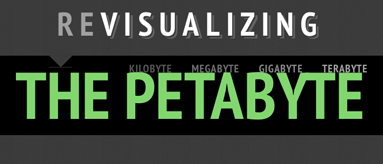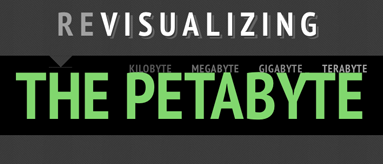 Data size is quickly outpacing storage space in the media and entertainment industry, and object-based storage can play a pivotal supporting role to help companies meet growing challenges
Data size is quickly outpacing storage space in the media and entertainment industry, and object-based storage can play a pivotal supporting role to help companies meet growing challenges
 Data size is quickly outpacing storage space in the media and entertainment industry, and object-based storage can play a pivotal supporting role to help companies meet growing challenges
Data size is quickly outpacing storage space in the media and entertainment industry, and object-based storage can play a pivotal supporting role to help companies meet growing challenges
The media and entertainment industry is generating denser data types than it ever has before, and the density is accelerating at a rapid pace. Every day, media producers are creating more 4K and 8K content to meet the consumer demand for a better visual experience, but this trend exponentially increases storage costs for the companies that must preserve that content. These larger file sizes are already reshaping how media and entertainment companies integrate digital content storage into their business strategy and IT architecture. As the industry continues to innovate and create, storage will play an integral role in helping digital assets be properly preserved, secured and accessed. With different storage system varieties to consider, who is up for the call?
Traditional block-and-file-based storage systems can hardly keep up with the new demand in storing digital content. These systems are typically a fixed capacity and are assigned a fixed performance rating – they are not designed to scale performance or capacity on-demand. Once organizations reach the storage limit of these traditional systems, they have to purchase and deploy another system. To better illustrate the challenges this industry is facing, let’s consider the size of a petabyte and what that looks like. A petabyte is 1,000 terabytes or 1015 bytes of data. The James Cameron film Avatar alone required more than one petabyte of data storage – and, according to a Coughlin Associates report, stereoscopic digitally-produced films will only increase in size: several petabytes or even exabytes of data per movie can be expected in the near future. Dealing with the sheer volume of this kind of data, media and entertainment companies are beginning to realize traditional storage techniques are cost prohibitive and can stifle innovation.
While the vast majority of organizations in the media and entertainment industry are aware of the data explosion, few are adequately prepared to address the challenges. Companies that are not up-to-speed on advancements in storage technology are facing major challenges because data growth in the media and entertainment industry shows no signs of slowing down, and will likely even grow at a rate faster than expected. Organizations need to start looking at storage solutions that can carry them into the future.
Why Object-Based Storage Fits the Part
Object-based storage has emerged as a reliable modern alternative to block-and-file based storage systems, helping companies achieve greater storage capacity. Developers optimize these disk-based storage systems for context-sensitive search and retrieval of unstructured data objects. Unlike other storage solutions, this technology uses a very flat namespace and flexible metadata to keep track of where data objects are stored. There is no limit to the amount of metadata an application can use. This makes the system highly scalable, accessible and cost-effective. Users can scale simply by adding more capacity using commodity components, or by retiring old assets and replacing them with newer, higher capacity and efficient assets. In addition, the system is 100 percent available throughout the entire process of scaling and replacement – dramatically reducing the total cost of ownership.
Because movies, television shows and other media are the very lifeblood of the media and entertainment industry, company revenue, reputation and audience confidence are on the line if this data is vulnerable to external security threats. Storage solutions that bake in the proper protection to preserve these assets using software provide peace of mind for companies with much at stake if their digital assets are compromised. Storage systems must take a two-pronged approach to secure critical digital assets in order to meet this industry’s needs today and in the future.
First, the technology must incorporate high availability for storage and retrieval of digital assets to prevent system downtime and data loss in the wake of catastrophic events such as natural disasters. Second, storage solutions must be completely secure to exert tight control over who gains access to the digital assets as well as encrypt data to prevent malicious intent.
Security must be the strategic DNA integrated in any storage solution, especially now that we’ve entered the advanced persistent threat (APT) era. Some object-based storage solutions provide built-in data encryption and security. A system that slices and disperses data goes one step further to encrypt it using a keyless encryption method, thereby rendering it unusable to unauthorized parties. It is imperative for organizations in this industry to have the tools, resources and systems in place to protect their data on both of these fronts.
There isn’t any question that the face of data storage is changing, and that companies who deploy scalable storage options now position themselves well for future growth. With all of the above properties considered, object-based storage fits the part to complement the growing role of high resolution digital assets within the media and entertainment industry – and is, in fact, essential to adopt moving forward.








